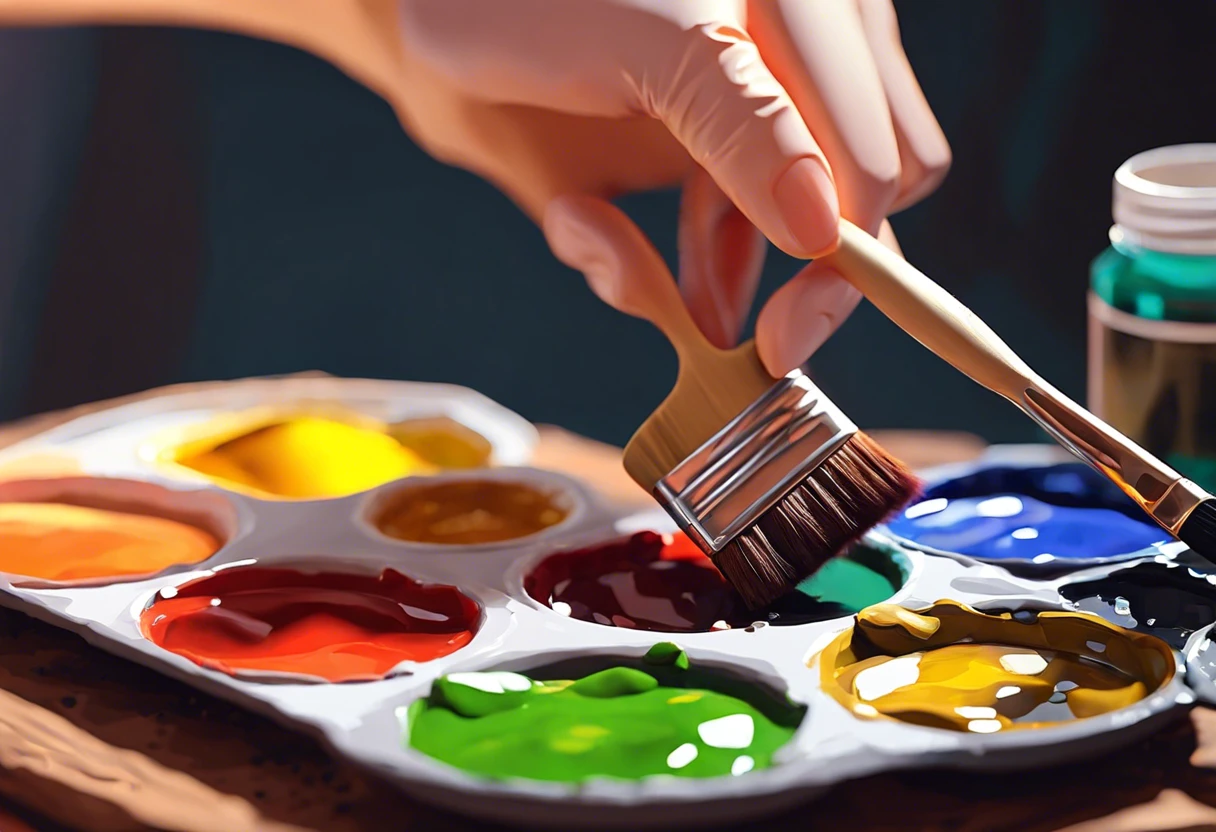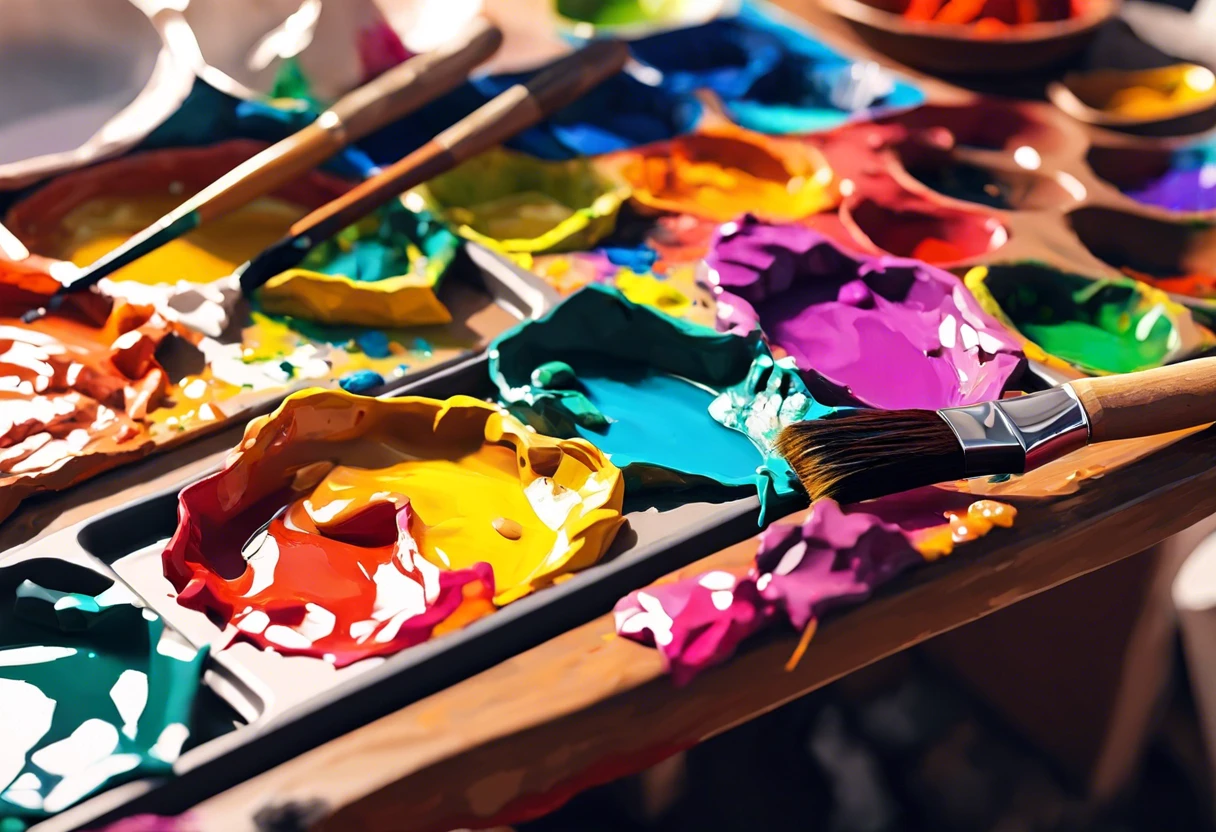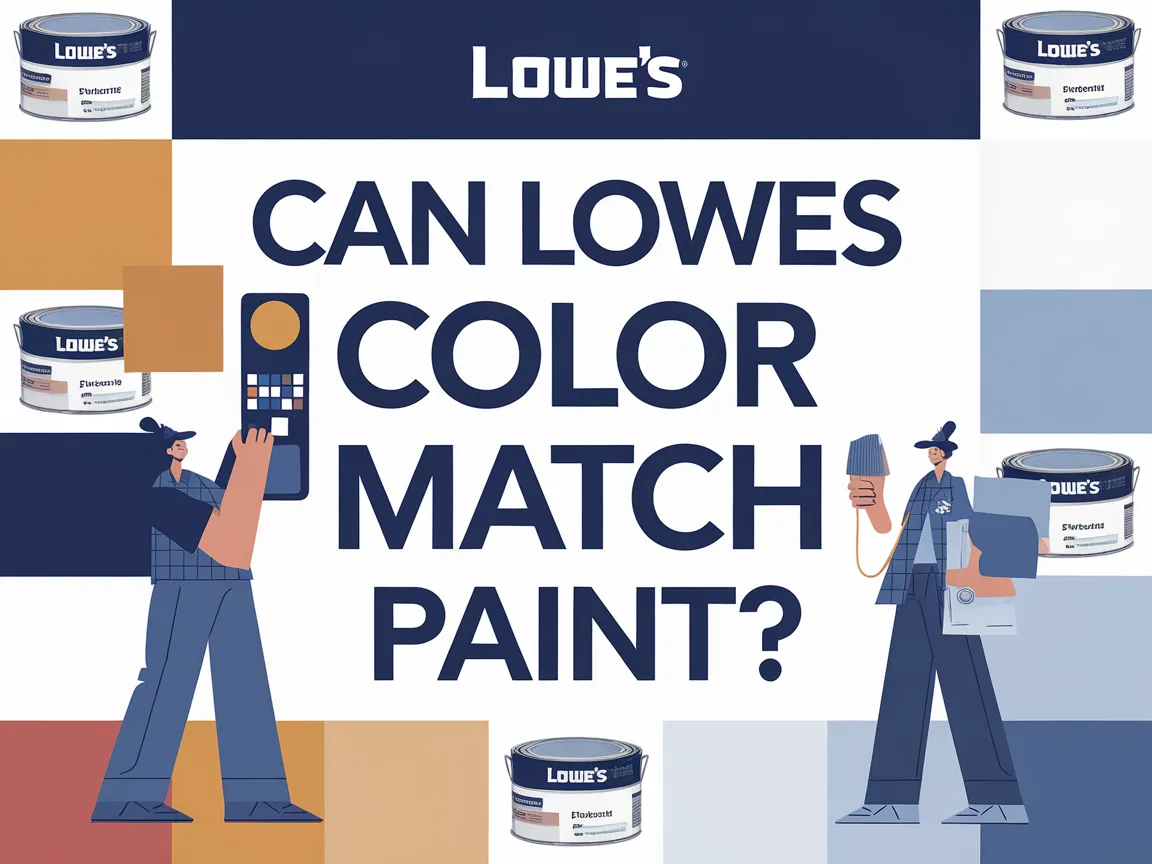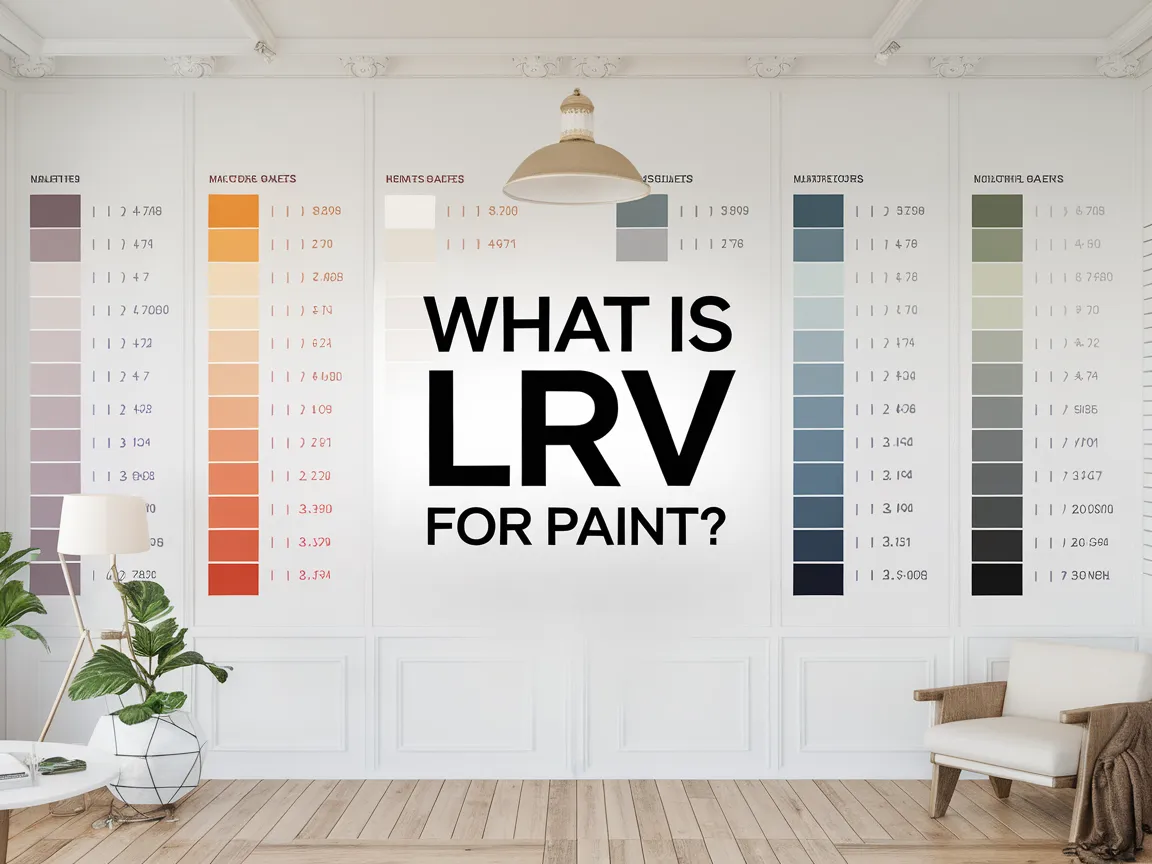How to Clean A Palette Of Oil Paint?
Published on: March 12, 2025 | Last Updated: January 7, 2025
Written By: Alisha Winters
A palette is like a special plate for colors where artists mix their paints. It helps you create beautiful art by blending different colors together.
Learning how to clean a palette of oil paint is super important. Trust me, a clean palette makes painting way easier and keeps your colors fresh for each masterpiece.
In this guide, I’ll cover what a palette is, the steps for effective cleaning, factors that can affect the process, common issues while cleaning, and some DIY paint project ideas. Plus, I’ll share tips on how to organize paint supplies, like how to use a paint mixing cup.
Contents
- 1 How to Clean a Palette Of Oil Paint?
- 2 What is a Palette?
- 3 Before You Start Cleaning Your Palette
- 4 Steps to Effectively Clean Your Palette
- 5 Types Of Palettes Used by Oil Painters
- 6 Factors Affecting the Cleaning Process
- 7 Common Issues and Troubleshooting When Cleaning an Oil Paint Palette
- 8 Cleaning Techniques for Different Palette Materials
- 9 Comparison of Palette Cleaning Methods
- 10 Tips for Storing Your Clean Palette
- 11 Materials and Tools for Maintenance
- 12 Alternatives to Traditional Palette Cleaning
- 13 Finishing Touches After Cleaning Your Palette
- 14 Frequently Asked Questions About Cleaning an Oil Paint Palette
- 15 Conclusion
- 16 Useful Resources
How to Clean a Palette Of Oil Paint?
To clean an oil paint palette, scrape off excess paint with a palette knife. Use odorless mineral spirits (About 30 Ml) on a rag to wipe stains. Rinse your palette with warm water. Store it dry for next use. If you’re curious about mixing different paint types, you might want to explore mixing acrylic and latex paints.
The Finishing Touch
A freshly painted wall is a blank canvas. The best way to bring your room to life is with a single piece of statement art that ties everything together.
Browse Wall Art at Big Wall DecorWhat is a Palette?
A palette is a flat, portable surface artists use for mixing paints. Typically made of wood, plastic, or glass, its size varies; common dimensions range from 30 cm x 45 cm (12 in X 18 in) to larger sizes for extensive work.
Cleaning your palette is crucial to maintain its functionality. I’ve grappled with gunky palettes, which sparked a trial-and-error journey with cleaning methods!
I’ve used it for mixing vibrant colors—there’s nothing like watching those hues blend beautifully! Mastering the cleaning of a palette for oil paint is key, especially since those pigments can be stubborn. Knowing how to refresh it properly can enhance your artwork. Plus, a clean palette can lead to better color mixing and increased creativity!
Before You Start Cleaning Your Palette
What do you need to clean your oil paint palette?
- Solvent: You’ll need a solvent like Gamsol (A1138503) for effective cleaning. It dissolves oil paint well.
- Paper Towels: Use heavy-duty paper towels such as Viva (54800) to wipe off excess paint. They’re durable and absorbent, keeping your palette surface intact.
- Palette Knife: A palette knife like Martin F. Weber (50228) helps remove dried paint without scratching. This tool keeps the palette in good shape.
- Glass Jar: A glass jar, such as Mason Jar (7268930), is necessary for storing used solvents. It’s eco-friendly and prevents spills.
That covers essential tips for cleaning your palette. Let’s now take a look at effective steps for palette cleaning.
Also See: Where to Clean Paint Brushes? Quick Maintenance Tips

Steps to Effectively Clean Your Palette
Here are the essential steps to clean an oil paint palette effectively.
The Finishing Touch
A freshly painted wall is a blank canvas. The best way to bring your room to life is with a single piece of statement art that ties everything together.
Browse Wall Art at Big Wall Decor-
Remove Excess Paint
Start by using a palette knife or scraper to remove as much excess paint as possible. Do this while the paint is wet; it’s much easier than waiting for it to dry.
I once waited too long, and it was a hassle. Scraping it off before it hardens saves time and energy, which I’d rather spend on painting!
-
Apply Solvent to the Palette
After removing the excess, pour some odorless mineral spirits or turpentine onto the palette. About 15-20 mL (1-1.5 Tablespoons) should suffice.
Swirl it around with a brush or a clean cloth. This step helps dissolve the remaining paint, making the next step easier. Always choose a solvent like Gamsol, which is less toxic and effective! If you’re working with wood surfaces like cedar, you might want to explore painting techniques for cedar wood.
-
Scrub With a Brush
After applying the solvent, grab a stiff-bristled brush and scrub the palette. Focus on areas where paint has dried—don’t be gentle!
I recommend using a natural-bristle brush. It significantly helps in breaking down stubborn paint. You’ll be surprised by how easily the paint comes off!
-
Rinse and Dry the Palette
Rinse the palette under running water to remove any leftover solvent and paint bits. Ensure all residue is gone before drying the surface with a clean towel or letting it air dry.
A good habit is to repeat this process after each painting session. It keeps the palette maintained and saves me from tedious scrubbing later. Keeping it clean allows me to focus on what really matters—my art!
We have now covered the steps for effectively cleaning your palette. Next, we will explore the different types of palettes used by oil painters.
Types Of Palettes Used by Oil Painters
Let’s explore the types of palettes used: Wooden, Glass, Disposable, and Plastic.
-
Wooden Palette
A wooden palette is traditional and widely used. It absorbs some oil, which helps manage larger amounts of paint. Clean it with a solvent quickly to avoid stains.
-
Glass Palette
Glass palettes have a smooth surface that stays clean, but they’re delicate. You can wipe off wet paint easily with a razor scraper, leaving it spotless for your next session.
-
Disposable Palette
These convenient options have pre-printed sheets. Just toss them when you’re done! You’ll save time on cleanup, making them great for quick sessions.
-
Plastic Palette
Plastic palettes are lightweight and easy to clean. However, paint can stain if left too long, so wash them immediately with soap and water to keep them in shape.
From my perspective, the wooden palette gives me better control over my painting technique. It resonates more with the texture of oil paint, allowing for a perfect blend.
We’ve wrapped up the different types of palettes used by oil painters. Let us turn our attention to the factors influencing the cleaning process.
Factors Affecting the Cleaning Process
What factors influence the method for cleaning an oil paint palette?
-
Paint type: Different oil paints may need specific solvents, affecting cleaning effectiveness.
-
Dried paint thickness: The thickness of dried paint can make removal difficult and time-consuming.
-
Palette material: Wood palettes may need a gentler approach than glass or plastic ones for cleaning.
-
Cleaning tools: The brushes or scrapers you use significantly impact cleaning efficiency.
We’ve wrapped up the factors influencing the cleaning process here. Let us turn our attention to common problems and solutions when cleaning an oil paint palette.

Common Issues and Troubleshooting When Cleaning an Oil Paint Palette
Once, my friend struggled with a dried clump on her palette. She soaked it overnight in solvent to soften the paint. It took 24 hours, but it worked!
If you’ve got leftover stubborn bits, use a palette knife and mineral spirits (400 Ml or 13.5 Fl Oz) to scrape gently. A soft cloth can help, too!
Cleaning Techniques for Different Palette Materials
Different materials require unique cleaning approaches. Let’s dive into the specifics!
Wooden Palette
For wood palettes, start with scraping off dried paint gently. Use a mixture of solvent and linseed oil (about 10 mL) to clean without damaging the surface. Wipe with a cloth, then store in a cool, dry place. If you’re looking to expand your painting techniques, acrylic paint offers versatile options.
Glass Palette
Glass palettes are easy! Just scrape with a razor blade and rinse with warm water. For stubborn spots, a few drops of detergent can help. Dry thoroughly to avoid streaks.
Plastic Palette
Plastic palettes need immediate cleaning. Wash with soap and water right after using to prevent staining. If paint dries, use a soft cloth soaked in mineral spirits to soak and wipe clean.
The Finishing Touch
A freshly painted wall is a blank canvas. The best way to bring your room to life is with a single piece of statement art that ties everything together.
Browse Wall Art at Big Wall DecorDisposable Palette
Disposable palettes make cleanup simple! Just throw them away when you’re done. If you’ve used printed sheets, a quick sweep with a dry cloth can keep them looking fresh for next time.
Comparison of Palette Cleaning Methods
Here’s table summarizing key cleaning methods:
| Palette Material | Cleaning Method | Recommended Products |
|---|---|---|
| Wood | Scrape, solvent wash, linseed oil | Gamsol, Linseed Oil |
| Glass | Scrape, rinse with detergent | Razor Blade, Dish Soap |
| Plastic | Wash with soap, soak in spirits | Mild Soap, Mineral Spirits |
| Disposable | Dispose after use | N/A |
Tips for Storing Your Clean Palette
Storing your clean palette properly can extend its life and make your next painting session smoother.
- Keep It Covered: Always cover your clean palette with plastic wrap or a cloth. This prevents dust buildup and keeps it ready for next use.
- Store Flat: If it’s a flexible or wooden palette, lay it flat. This avoids warping and keeps the surface intact.
- Avoid Sunlight: Store your palette in a cool, dark place. Sunlight can warp and discolor the materials, especially plastic and wood.
Materials and Tools for Maintenance
Having the right tools makes all the difference when it comes to maintaining your palette.
| Tool/Material | Purpose | Recommended Type |
|---|---|---|
| Palette Knife | Removing dried paint | Stainless Steel or Plastic |
| Scrub Brush | Brushing off residue | Stiff-Bristled Natural Brush |
| Mineral Spirits | Cleaning solvent | Odorless Variety |
| Plastic Wrap | Covering palette for storage | Heavy-Duty Type |
Alternatives to Traditional Palette Cleaning
Want to try something new? Here are a few creative alternatives for cleaning your oil paint palette.
- Baby Wipes: Use unscented baby wipes for a quick clean—these can lift fresh paint easily.
- Vegetable Oil: Some artists swear by vegetable oil. It helps loosen paint without harsh chemicals.
- Denatured Alcohol: This works great on stubborn spots—just be careful with glossy palettes!
Finishing Touches After Cleaning Your Palette
After scrubbing your palette, apply a thin coat of linseed oil (About 5-10 Ml) to nourish the surface. This helps prevent paint from sticking the next time you create.
Inspect all edges for remaining residue for precise cleaning. Using a scraper like a palette knife reduces buildup effectively. Consider rubber scrapers, like Das Brand, for easier removal and maintenance.
If you’re experienced, use a heat gun set to about 65°C (150°F) to soften stubborn paint blobs for quick removal. Always warm up before scraping for the best results.
Frequently Asked Questions About Cleaning an Oil Paint Palette
Now let us look at some common questions I typically get asked.
What is the Best Solvent for Cleaning an Oil Paint Palette?
Yes, the best solvent for cleaning an oil paint palette is mineral spirits. Mineral spirits work well because they effectively break down oil paint, making removal easier. Alternatives like turpentine also exist, but they can be harsher on the palette material. When selecting the right tools for cleaning, I recommend exploring professional paint brush techniques.
Can I Use Soap and Water to Clean My Oil Paint Palette?
No, soap and water aren’t ideal for cleaning an oil paint palette. Oil paint requires a solvent for thorough cleaning, as soap and water won’t remove oil or grease properly, leaving residue that can affect future paintings. When you need specific techniques for maintaining your painting tools, professional painters recommend specialized cleaning methods.
How Often Should I Clean My Oil Paint Palette?
You should clean your oil paint palette after every painting session. Regular palette cleaning techniques help ensure better color mixing and prevents old paint from contaminating fresh hues, thereby maintaining the quality of your work. If you’re curious about painting techniques beyond oil, exploring alternative paint mediums can expand your artistic versatility.
Is It Necessary to Wear Gloves While Cleaning My Palette?
Yes, it’s necessary to wear gloves while cleaning your palette. This protects your skin from irritants in solvents, ensuring you stay safe while handling potentially harmful substances contained in oil paints and cleaning agents.
Can I Leave Paint on My Palette for a While?
No, it’s not advisable to leave paint on your palette for a long time. If you leave oil paints on your palette for extended periods, they can dry out and become hard, making them difficult to clean and reuse efficiently. When selecting exterior paint for your next project, you might want to explore Benjamin Moore Aura’s versatile options.
What Material Should My Oil Paint Palette Be Made Of?
Your oil paint palette should ideally be made of wood or glass. These materials provide a smooth surface for mixing and prevent paint from sticking too much, unlike plastic, which can hold onto paint remnants.
Can I Use the Same Palette for Acrylic and Oil Paints?
No, you shouldn’t use the same palette for acrylic and oil paints. Each type has different properties; acrylics dry fast and require a different cleaning method than oils, which could lead to contamination of the paint types. When working in challenging temperatures, you’ll want to be extra cautious about paint application and painting during cold weather conditions.
How Should I Store My Palette Between Painting Sessions?
You should cover your palette with plastic wrap when storing it between painting sessions. This keeps the paint moist and workable, allowing you to pick up right where you left off during your next session.
Also See: Can You Match Paint From a Picture? Here’s How!
Conclusion
We are almost done. We covered what a palette is, steps to effectively clean your palette, factors affecting the cleaning process, common issues when cleaning an oil paint palette, and some DIY project ideas for personalized palettes.
Happy cleaning your palette of oil paint, whether you rinse it with mineral spirits, scrape off excess paint, or use a glass palette. Remember to gather your supplies and for optimal results, follow the order of steps we discussed.
Thank you for exploring these insights! If you’re interested in more resources, visit Paint Answers.
Useful Resources
- Gurney, J. (2009). Color and Light: A Guide for the Realist Painter. Kansas City, MO: Andrews McMeel Publishing.
- How to clean oil paint from my glass palette – Quora
- How to Clean Up After Oil Painting Without Solvent
- How to Clean a Glass Paint Palette for Oil or Acrylic Painting
Experienced interior designer with 15+ years in transforming spaces, blending artistry with expertise in color and design. Rhode Island School of Design graduate, specializing in restorations and modern makeovers.
Cleaning, Topics









